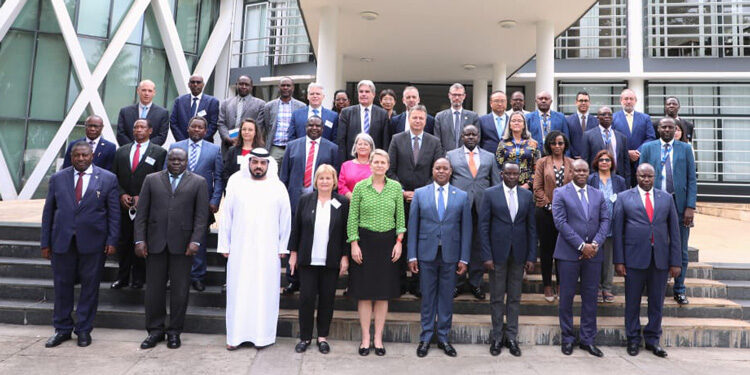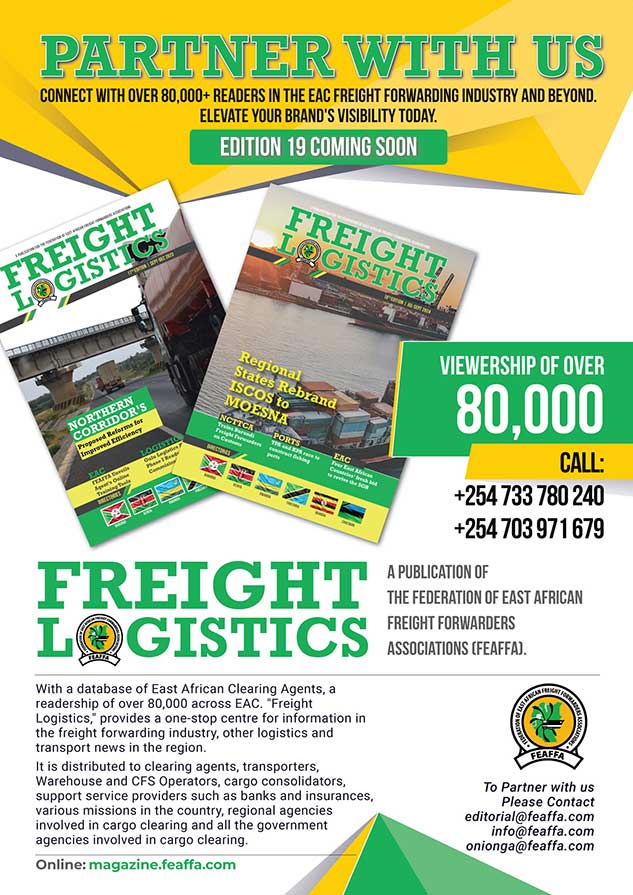The East African Community (EAC) has been spotlighted for its growing role in advancing intra-African trade, according to the newly released 11th edition of the Assessing Regional Integration in Africa (ARIA XI) report.
The report, launched on 13 July 2025, is a joint publication by the United Nations Economic Commission for Africa (UNECA), the African Union Commission (AUC), and the African Development Bank (AfDB). It offers a detailed assessment of Africa’s regional integration progress and policy recommendations to fast-track economic transformation across the continent.
Despite intra-African trade still accounting for only 16% of Africa’s total trade, the report singles out the EAC for its impressive strides in bolstering regional trade flows. Among all Africa’s Regional Economic Communities (RECs), IGAD led with a 36% share, thanks largely to strong trade activity from Kenya and Uganda and notable re-exports via Djibouti.
The EAC closely followed, buoyed by the implementation of its Customs Union and aggressive trade facilitation reforms that have eased the movement of goods across member states.
Between 2019 and 2023, 28% of EAC’s merchandise exports were destined for African markets—well above the continental average. Additionally, 19% of imports originated from African countries, signaling strong regional economic interdependence. However, the report also reveals the EAC’s significant trade exposure to Asia, which accounted for 56% of exports and 64% of imports, underscoring the need to diversify trade partnerships and reduce external dependency.
ARIA XI also highlights the undervalued role of Informal Cross-Border Trade (ICBT), estimating that it could boost intra-African trade figures by an additional 7–16%. Informal exchanges comprise 30–72% of total cross-border trade between neighbouring countries, suggesting that the EAC’s true trade engagement within Africa may be significantly underreported.
Reacting to the findings, Ms. Annette Mutaawe Ssemuwemba, EAC Deputy Secretary General in charge of Customs, Trade, and Monetary Affairs, said:
“The ARIA XI report confirms that the EAC is one of the leading regions on the continent in terms of intra-African trade. This is a testament to the strength of our Customs Union and the success of our Single Customs Territory in reducing barriers and facilitating trade within the region and beyond.”
While celebrating these gains, Ms. Ssemuwemba also acknowledged the EAC’s current reliance on external markets:
“The fact that most of our trade is still directed outside Africa underlines a strategic vulnerability. This presents a clear opportunity for us to leverage the African Continental Free Trade Area (AfCFTA) to build stronger regional value chains, diversify our export destinations, and reduce our exposure to global shocks.”
She affirmed the EAC’s continued commitment to work collaboratively with Partner States, the AU, and continental institutions to implement the AfCFTA and accelerate the Action Plan for Boosting Intra-African Trade (BIAT).
“Strategic investments in infrastructure, harmonization of standards, and reducing non-tariff barriers will be crucial in realizing our shared vision of a more integrated, resilient, and prosperous Africa,” she said.
Ms. Ssemuwemba concluded by expressing appreciation to the report’s authors:
“We extend our profound appreciation to UNECA, the African Union Commission, and the African Development Bank for their invaluable efforts in publishing the ARIA XI report. It not only documents our progress and challenges but also equips policymakers and stakeholders with a practical roadmap toward achieving the African Economic Community, including the realization of a Continental Customs Union and Common Market.
Mr. Charles Mwebembezi, the president of the Federation of East African Freight Forwarders Associations (FEAFFA), commended the EAC for its tremendous progress in enhancing both intra- and inter-African trade.
“Our collaboration with the EAC Directorate of Customs in professionalizing the freight forwarding sector has strengthened our competitiveness in service delivery. Through continuous capacity building and training, freight forwarders are now better equipped to facilitate faster, more cost-effective cross-border trade, contributing to the region’s overall competitiveness,” he said.
This article was published by Githua Kihara, an editorial consultant for FEAFFA’s Freight Logistics Magazine. For any inquiries, please contact us via email at editorial@feaffa.com or freightlogistics@feaffa.com, or reach out to Andrew Onionga directly at onionga@feaffa.com / +254733780240.





